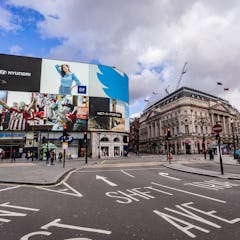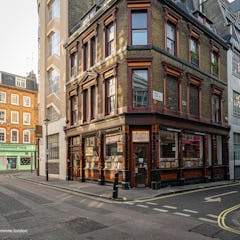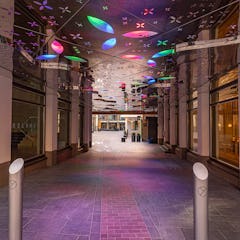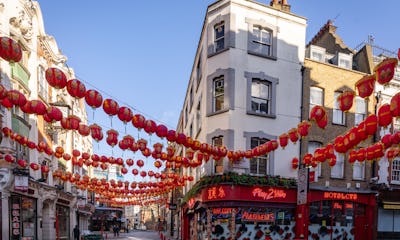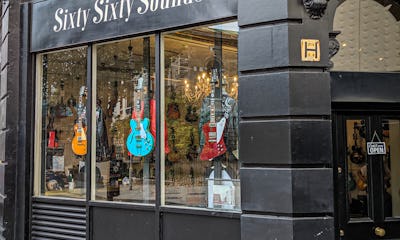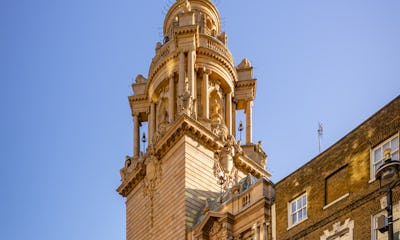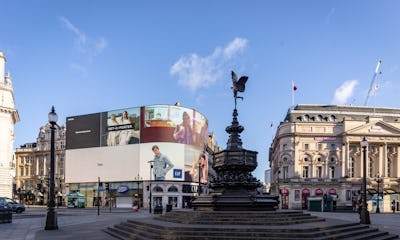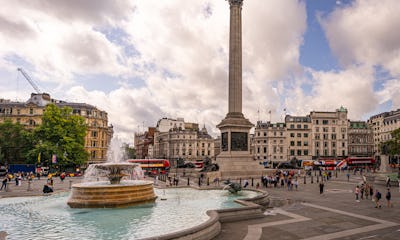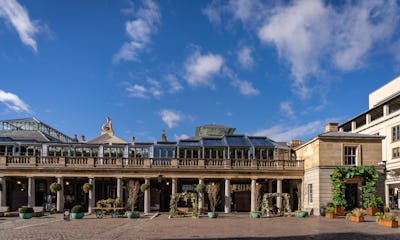The area is home to some of London’s most popular attractions, including Piccadilly Circus, Leicester Square and Trafalgar Square. Piccadilly Circus is famous for its giant advertising screens and handsome surrounding buildings, with many double-decker buses passing by. Leicester Square is often the stage for film premieres, where you can spot major movie stars attending red-carpet events, while Trafalgar Square hosts the National Gallery and Nelson’s Column.
History and Development of the West End London
The story of the West End begins in the 17th century, when the City of London was overcrowded and busy with commerce. Wealthier residents began relocating to quieter areas, closer to the royal court but farther from industrial noise.
A key figure in this development was Henry Jermyn, who planned St James’s Square in the mid-1600s. The symmetrical stone townhouses around the square laid the groundwork for the West End’s future architecture and social fabric.
In the 18th and 19th centuries, the area that is now the West End developed rapidly. Town planners such as John Nash created a street network that included Regent Street and Shaftesbury Avenue. These routes linked luxurious residential districts, shopping streets and theatre clusters into a single whole.
By the mid-1800s, a theatre boom was underway, with ever more venues being built. The West End became London’s entertainment centre, and “West End theatre” came to mean high-quality professional theatre. Producer Richard D’Oyly Carte was a central figure: he built the Savoy Theatre. He brought Gilbert and Sullivan’s operettas there, laying the foundations for modern musical theatre that combines artistic ambition with technical excellence.
By the 20th century, the West End’s reputation was firmly established. Despite the bombings of the Second World War, most theatres remained open, becoming a symbol of the city’s resilience and the continuity of everyday life.
The West End Then and Now
Once upon a time, West End theatres were social meeting places for the upper classes, staging operas, comedies and operettas. A night at the theatre was a grand occasion, complete with evening gowns and tailcoats.
After the war, the theatre opened up to everyone. Ticket prices fell, repertoires diversified, and audiences widened. Middle-class patrons and international visitors discovered the West End, and it became part of London’s broader cultural life. In the latter half of the 20th century, musicals such as My Fair Lady, Cats and Les Misérables achieved worldwide fame and laid the groundwork for modern musical production.
Today, the West End is technologically advanced and diverse. Alongside the classics are new, ambitious works that make use of lighting, projections and digital sets. Harry Potter and the Cursed Child is especially known for its state-of-the-art special effects, but many other productions also employ modern visual techniques.
Audiences today are international, and theatre tourism is a vital part of London’s cultural scene. Over 15 million tickets are sold annually, and programmes include stories from different cultures, identities and perspectives. Yet the West End’s allure remains: every evening offers the chance to experience something unforgettable.
Top West End Musicals in London
The Lion King
Disney’s beloved musical tells the coming-of-age story of lion prince Simba, centred on responsibility, courage and family. Elton John’s music and African rhythms meet spectacular sets and colourful costumes. Performed at the Lyceum, one of London’s oldest and most respected theatres.
Les Misérables
Based on Victor Hugo’s novel, the musical follows Jean Valjean’s quest for freedom and forgiveness against the backdrop of revolutionary France. Famous songs like “I Dreamed a Dream” and “One Day More” have made it one of the world’s most loved theatre works.
The Phantom of the Opera
Andrew Lloyd Webber’s classic tells of the mysterious phantom of the opera house and his love for the singer Christine. The gilded interior and historic atmosphere of His Majesty’s Theatre complement the tale’s dark romance.
Wicked
The story of the witches of Oz offers a new perspective on a familiar world before Dorothy’s arrival. Visually striking, it finds a perfect home in the Art Deco splendour of the Apollo Victoria.
The Mousetrap
Agatha Christie’s thriller has been performed continuously for over 70 years. Set in a remote guesthouse where every visitor has a secret, it gains extra tension and atmosphere from the intimate St Martin’s Theatre.
Harry Potter and the Cursed Child
J.K. Rowling’s world continues on stage 19 years later, as Harry’s son Albus seeks his place in the shadow of a famous father. The Palace Theatre provides stagecraft and lighting that make the magic feel real.
Hamilton
Lin-Manuel Miranda’s award-winning musical blends hip-hop, history and theatre into a powerful whole, telling the story of Alexander Hamilton with a modern edge in the restored Victoria Palace Theatre.
Mamma Mia!
Set to the music of ABBA, this joyful, warm-hearted musical follows Sophie and her mother under the Greek sun. Catchy songs and feel-good energy have made it one of the West End’s longest-running hits.
West End Plays
While musicals are the main draw for many visitors, don’t overlook other theatre productions. There’s a wide range on offer from Shakespeare to contemporary works, often featuring actors familiar from film and TV. Current and recent appearances include names such as Bryan Cranston, Andrew Lincoln, Susan Sarandon and Alicia Vikander; in the last few years, Ian McKellen, Jake Gyllenhaal, Sarah Jessica Parker and David Harbour have also appeared.
Leicester Square and Nearby Attractions
Leicester Square is the West End’s busiest square and is famous for red-carpet film premieres, often attended by actors and directors. It’s home to two high-quality cinemas with excellent picture and sound.
The square also features several statues dedicated to figures from film and theatre. At its centre stands a statue of William Shakespeare, in place since 1874, a reminder of London’s long theatrical tradition. Around it are several modern sculptures forming the “Scenes in the Square” film trail.
Familiar characters you’ll find on the square include:
- Harry Potter flying on his broomstick
- Mary Poppins floating with her umbrella
- Mr. Bean is seated on a bench with his signature expression
- Paddington Bear is enjoying a marmalade sandwich
- Charlie Chaplin in his famous tramp attire
And from building tops or walls nearby:
- Laurel and Hardy in a dance pose
- Batman located high on a building façade
- Wonder Woman captured mid-motion as she bursts through a wall
Leicester Square is more than a square: it’s an open-air museum that showcases London’s cultural history through film and theatre, bringing together storytellers of past and present.
Dining Before the Show – West End Restaurants
An evening at the West End often begins with dinner, and many restaurants offer special pre-theatre menus. One of the most popular areas for dining is Covent Garden, whose cobbled lanes and glowing shopfronts are packed with places to eat. You can enjoy a light meal before the performance or unwind afterwards with a drink.
DishoomCovent Garden is a favourite before the theatre. Warm and lively, with interiors inspired by old Indian cafés, it serves classic flavours with modern touches. Curries, grilled tandoori dishes and fresh naan arrive quickly, ideal before curtain-up.
The Ivy Market Grill is elegant yet approachable, offering classic British dishes with a modern twist. Its pre-theatre menu makes a three-course dinner easy before a show; the atmosphere is lively but refined, with attentive service.
Rules is London’s oldest restaurant and part of the city’s history. Wood-panelled interiors, gilded details and art-lined walls make dining a complete experience. The menu features traditional British fare such as game, pies and classic desserts.
Many theatres also have their own bars and lounges, where you can enjoy a glass of wine or bubbles before the show or during the interval. Together, dinner and a performance make for a memorable night in the heart of London.
The West End is full of excellent places to eat — from affordable bites to some of the city’s top fine-dining venues. You’ll find a broad range of cuisines reflecting London’s multicultural character, and a huge number of bars and pubs for a traditional ale or a cocktail. From Carnaby Street in Soho you can slip into Kingly Court, a three-storey dining destination with 21 restaurants — and in fact the whole block between Carnaby and Kingly Streets is packed with eateries and bars. The same is true of much of Soho, known for its restaurants, bars and live music.
How to Buy West End Theatre Tickets
You can buy West End tickets easily online or in person. Many theatres sell directly via their own websites, and there are several official ticket outlets around the city.
The best known is the TKTS Booth on Leicester Square — the official box office for Theatreland — which sells same-day and next-day tickets often at discounted prices. There are also reliable vendors around Covent Garden and Piccadilly Circus who sell official West End tickets.
Prices vary by show and seat. For the most popular musicals, such as The Lion King or Hamilton, it’s wise to book several weeks in advance, while smaller productions often have availability even on the day.
Why Visit London’s West End
The West End is more than a theatre district: it’s the living heart of London, where history and the present meet each evening as the curtain rises. Whether you choose a classic or a brand-new musical, theatre in the West End is an experience that lingers long after the final bow.
